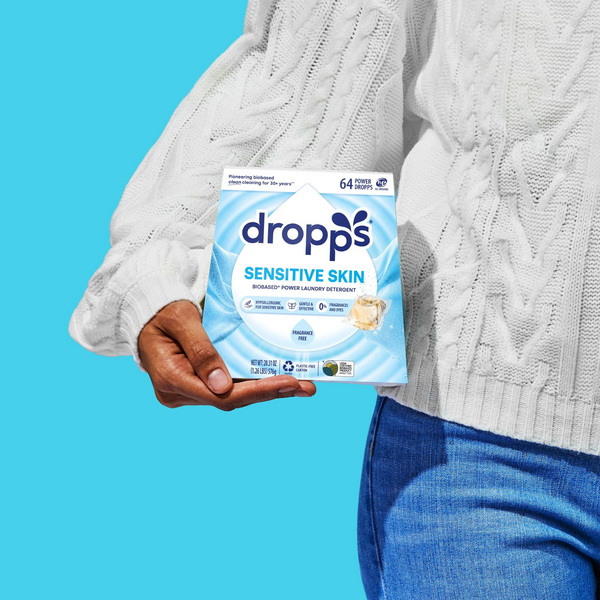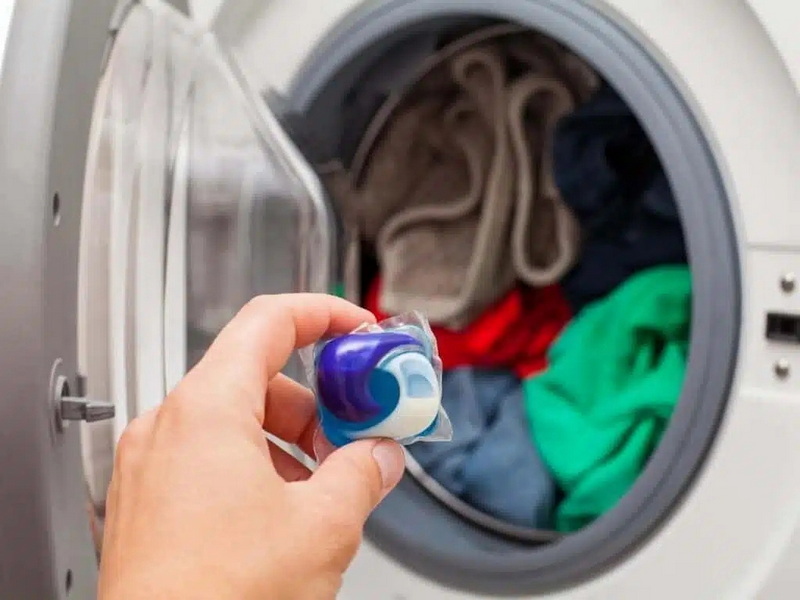Dongguan UFine Daily Chemical Co.,Ltd.
- All
- Product Name
- Product Keyword
- Product Model
- Product Summary
- Product Description
- Multi Field Search
Views: 222 Author: Tomorrow Publish Time: 10-21-2025 Origin: Site











Content Menu
● How Do Laundry Pods Dissolve?
>> The Science Behind Dissolution
● Factors Affecting Laundry Pod Dissolution
>> Machine Load and Water Level
>> Water Movement and Cycle Duration
● Best Practices for Using Laundry Pods
>> Place Pods Directly in the Drum
>> Use the Recommended Water Temperature
>> Avoid Overloading the Washer
>> Use the Appropriate Number of Pods
● Troubleshooting Common Pod Dissolution Problems
>> Undissolved Film on Clothes
>> Residue Inside the Washing Machine
● Environmental Considerations
● Summary
● FAQ
>> 1. Can laundry pods dissolve in cold water?
>> 2. Where should I place laundry pods in the washing machine?
>> 3. Why do laundry pods sometimes leave residue on clothes?
>> 4. How many laundry pods should I use per load?
>> 5. Can I cut laundry pods to make smaller doses?
Laundry pods have become a popular alternative to traditional laundry detergents due to their convenience and pre-measured doses. However, understanding how to dissolve them properly is essential for efficient cleaning and to protect your washing machine. This article explores how laundry pods dissolve, factors affecting their dissolution, and tips for best usage.

Laundry pods are small, concentrated packets of detergent contained within a dissolvable film. The film is usually made from polyvinyl alcohol (PVA), which dissolves when exposed to water at certain temperatures. Inside the pod, you'll find powders, liquid detergents, or a combination of both that clean your clothes during the wash cycle.
These pods are designed to offer a convenient, mess-free way to handle detergents. Because the detergent is pre-measured, users avoid overdosing, which can lead to residue buildup or skin irritation.
The dissolvable film around the pods is designed to disintegrate upon contact with water. When you place a pod in your washing machine, it begins to dissolve as the water surrounds it. The detergent inside is then released gradually into the wash water, enabling efficient cleaning of fabrics.
The PVA film is water-soluble, especially in warm or hot water. It dissolves as water molecules infiltrate the film's structure, breaking the chemical bonds holding it together. This process releases the detergent inside.
Temperature plays a crucial role; when exposed to warmer water, the film dissolves quicker and more completely. In cold water, the film may only partially dissolve or take a significantly longer time to break down.
Additionally, the amount of agitation and the wash cycle length impact how completely the pod dissolves. Gentle or short cycles may not provide enough time or movement to fully dissolve the pod.
Several factors influence how well and how fast a laundry pod dissolves in your washing machine.
Hot or warm water dissolves laundry pods more effectively because heat increases the rate of chemical reactions, including the breaking down of the PVA film. In cold water, the pods may take longer to dissolve—or in some cases, not dissolve completely. This might result in detergent residue remaining on clothes.
Many pod manufacturers recommend using warm water to prevent such issues. If cold water washing is preferred for energy-saving or fabric care reasons, consider pods specially formulated for cold water use.
Water hardness refers to the concentration of minerals such as calcium and magnesium in your water supply. Hard water reduces the effectiveness of detergents in general and can also interfere with the dissolution process of laundry pods.
In hard water, minerals may bind with components in the detergent, lessening their cleaning power. This can cause pods to dissolve unevenly or leave behind residue. Using water softeners or detergents designed for hard water might improve dissolution and cleaning.
Overloading a washing machine reduces the space available for pods to dissolve fully. When pods are trapped between clothes or compressed by an overfilled drum, water exposure is limited, leading to incomplete dissolution.
Similarly, washing machines with low water levels may not adequately cover the pod. Adequate water volume ensures pods dissolve fully and distribute detergent evenly throughout the load.
Sufficient agitation and cycle length help pods dissolve correctly. High-efficiency machines sometimes use lower water levels and gentler cycles, which might affect how pods dissolve.
Choosing a wash cycle appropriate for the type of clothes and soil level—and compatible with the pod's dissolution requirements—is essential to avoid residue issues.

To get the best results from laundry pods, it is important to use them correctly.
Always put laundry pods directly into the washing machine drum before adding clothes. This exposes them immediately to water and activates the dissolvable film.
Putting pods in the detergent drawer or after adding clothes may result in incomplete dissolution because the pod may not get proper water exposure or may become trapped.
Check packaging instructions, but generally aim for warm or hot water to ensure efficient pod dissolution and detergent release.
If you prefer washing in cold water, look for pods designed specifically to work in lower temperatures, as standard pods may not dissolve well.
Leave enough space in the drum so pods have room to dissolve completely without being crushed. Overloaded washers reduce water circulation and lengthen dissolution time.
One pod per regular load is sufficient in most cases. For larger or heavily soiled loads, consult the manufacturer's guidelines. Avoid using multiple pods unnecessarily, which can cause excess suds, residue, or damage to fabrics.
Store pods in a cool, dry place away from humidity. Moisture can cause pods to stick together or prematurely dissolve, reducing their effectiveness.
Sometimes, pods don't dissolve fully, leaving residue on clothes or in the machine.
This often happens if pods are placed in the detergent drawer instead of directly in the drum or if water temperature is too low. It can also occur if the load is too large or the wash cycle too short.
Build-up can occur if pods frequently fail to dissolve properly. This residue may clog discs or filters inside your machine, leading to odors or mechanical issues.
Regular cleaning cycles with washing machine cleaners or running hot cycles without clothes can help prevent buildup.
Storing pods in a damp or humid environment can cause them to stick and not dissolve well. Always reseal the pod container after use and store in a dry environment.
Pods that stick together will dissolve unevenly and may leave detergent lumps on clothes.
Laundry pods are designed to reduce plastic waste by offering a pre-measured detergent dose, eliminating excess packaging compared to traditional detergent bottles or boxes. They also help reduce overdosing, which lessens the amount of chemicals released into waste water.
Despite these advantages, pods and their packaging must be disposed of properly. Avoid flushing pods or packaging down drains, as they can cause environmental harm.
Manufacturers are increasingly working on biodegradable films and recyclable packaging to improve pod sustainability.
Laundry pods dissolve by the water-soluble PVA film breaking down on contact with water, releasing concentrated detergent into the wash. Optimal dissolution depends on water temperature, hardness, load size, water level, and agitation.
Using pods correctly—placing them in the drum before clothes, using warm water and appropriate load sizes—ensures they dissolve fully and clean effectively. Proper storage and awareness of washing machine settings help prevent residue and machine build-up.
By following these tips, you can enjoy the convenience of laundry pods and maintain clean, fresh clothes with minimal fuss.
Understanding how laundry pods dissolve helps you use them effectively for cleaner clothes and a properly maintained washing machine. Ensuring the right water temperature, proper pod placement, and machine loading are essential for optimal performance. Following these guidelines helps you avoid residue, protect your machine, and get the best cleaning results. With environmentally conscious choices and proper pod care, you also contribute to minimizing detergent waste and pollution.

Laundry pods can dissolve in cold water, but the process is slower and might be incomplete, potentially leaving residues. Warm or hot water is preferred for better dissolution. Some pods are specially formulated for cold water wash.
Always place laundry pods directly into the washing machine drum before adding clothes, not in the detergent drawer. This ensures immediate exposure to water and prevents pods from getting trapped.
Residue usually happens when pods don't dissolve fully, often due to cold water, insufficient water, improper placement, or overloading the washing machine.
Use one pod for small to medium loads and follow the manufacturer's guidelines for larger or heavily soiled loads to avoid overdosing and residue buildup.
It is not recommended to cut laundry pods as it can compromise the integrity of the film and the dosing of detergent, leading to poor wash results.